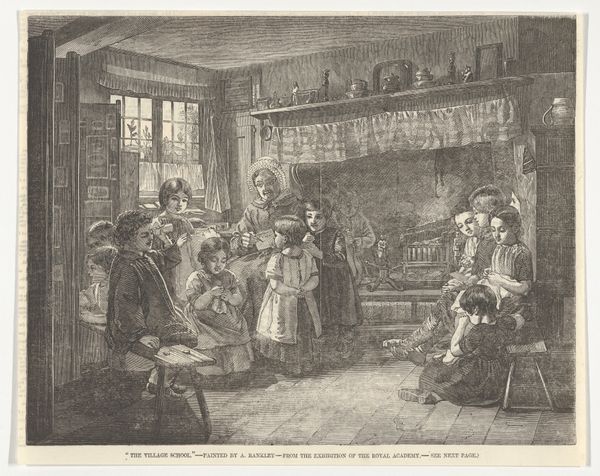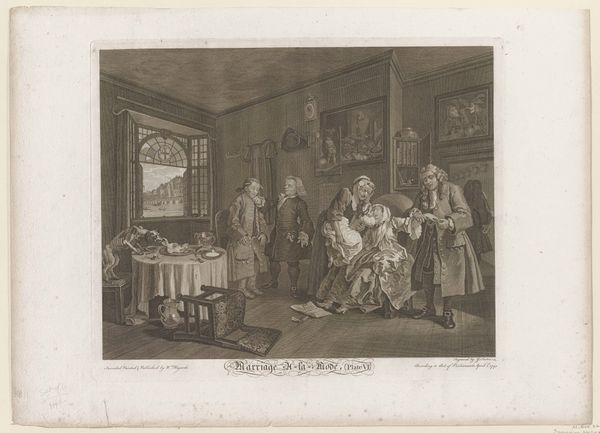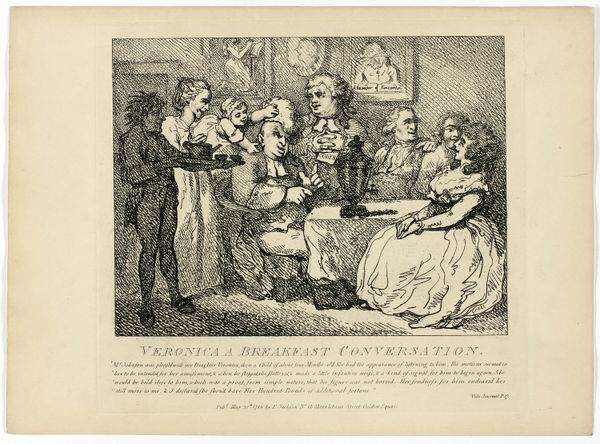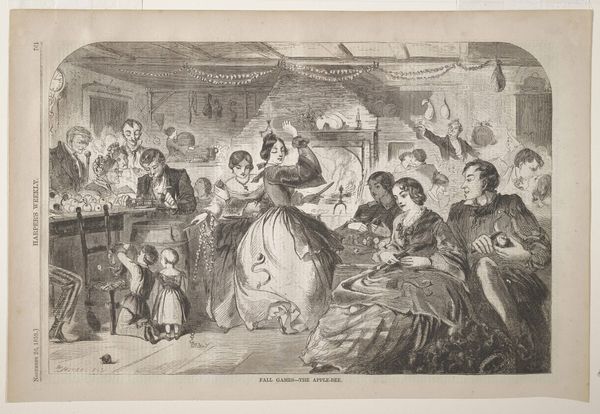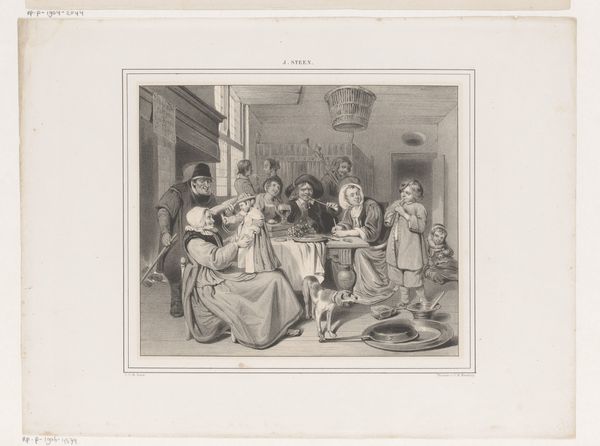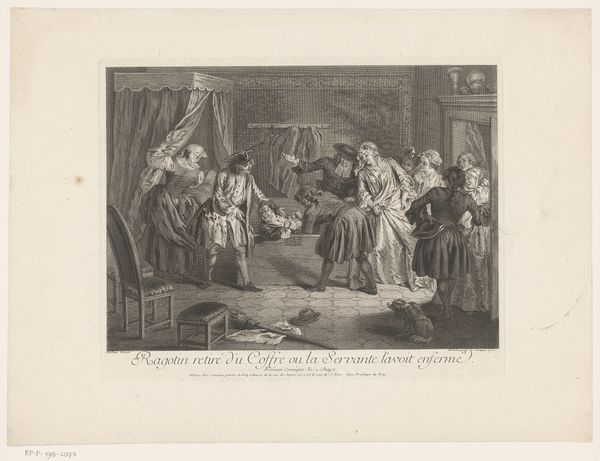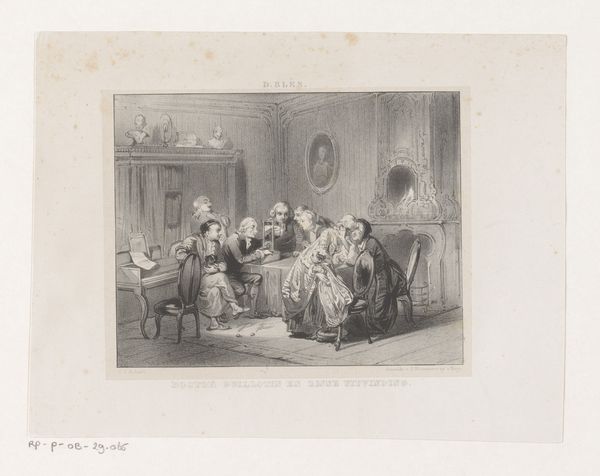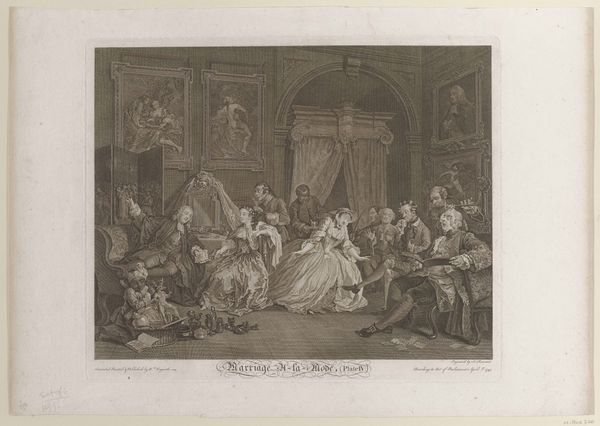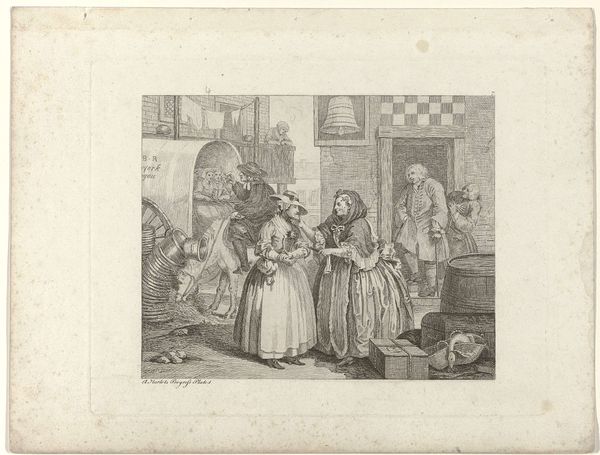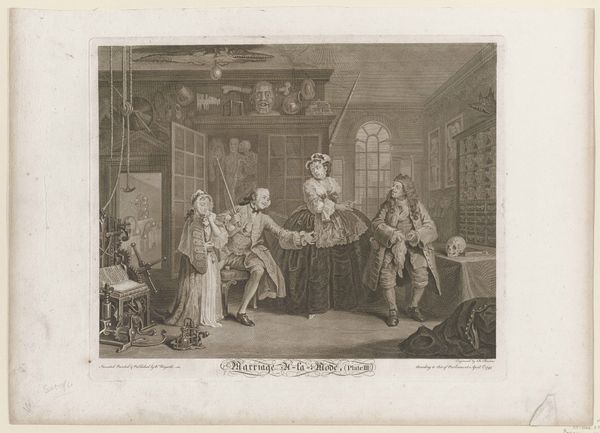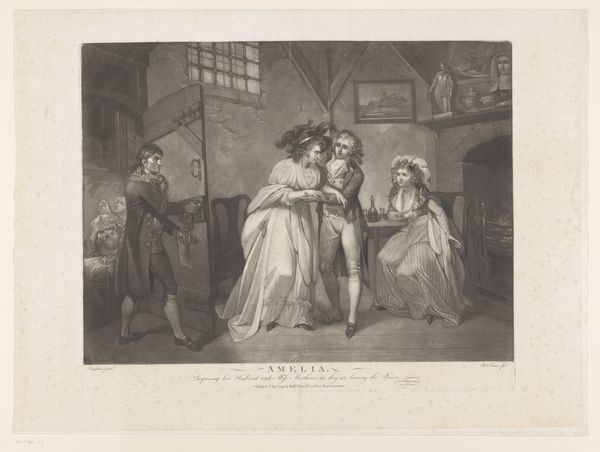
Inside of a Kitchen at Newcastle, from "Remarks on a Tour to North and South Wales, in the year 1797" 1800
0:00
0:00
drawing, print, etching
#
drawing
# print
#
etching
#
pencil sketch
#
romanticism
#
genre-painting
Dimensions: Sheet: 5 3/8 × 8 1/8 in. (13.7 × 20.7 cm)
Copyright: Public Domain
Curator: This etching is titled "Inside of a Kitchen at Newcastle, from 'Remarks on a Tour to North and South Wales, in the year 1797,'" created around 1800 by John Hill. Editor: It's a wonderfully evocative scene. The texture created by the etching technique almost makes me feel the warmth of that very active hearth and imagine all the sounds in this lively interior. Curator: The composition really drives that home. The artist segments the picture plane, opposing the hot fireplace, the seat of labor for the domestic staff, from the familial interaction on the other half of the picture plane. Editor: You're right, there's such a strong division between the two parts. Notice the machinery just above the cooking woman’s head? It reminds me how closely labor was associated with simple daily functions. We romanticize pre-industrial life, but this artist also shows the intense demands on families just to ensure there would be bread on the table. Curator: Absolutely. Consider, too, the limited color palette and fine detail, carefully constructed by a network of carefully rendered lines. This enhances the sense of intimacy, drawing viewers in to consider a humble moment in ordinary life. And it seems worth noting how the architectural elements guide your eye between both groups, too, subtly connecting labor with consumption. Editor: Do you think the print functions as social commentary, or is it an idealized depiction of life from the era? Given it was inspired by a tour, one might think Hill may have seen these everyday practices firsthand and simply chose to preserve them in this piece. Curator: The picturesque view might hide a lot of complexities regarding working-class living conditions at the time. In this regard, there's certainly potential for some social critique when contrasting it with contemporary art and social norms of the period. What does it reveal about labor? Who is consuming, and who is producing? These are questions worth asking about these sorts of interior scenes, don't you think? Editor: Undeniably. Reflecting on it now, it serves as a striking visualization of family life set in an age of intense transformations brought about by burgeoning industry. Curator: It allows us a close look at a transient, yet crucial period of society.
Comments
No comments
Be the first to comment and join the conversation on the ultimate creative platform.

